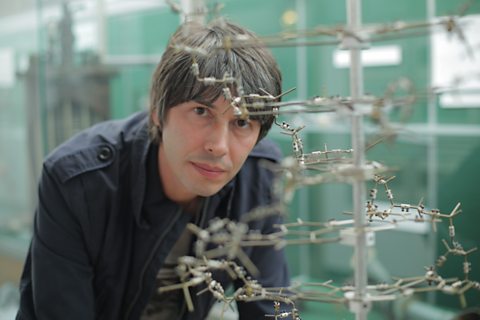This is a self-portrait of a 14 year old boy. He took it in 1852, which is only just over ten years after the invention of photography. So given the quality of this photograph, then that makes him a very precocious individual indeed.
His name is William Perkin.
When he started his career Perkin was living in exciting times. This was the Age of Empire, a world where in time the sun really would never set on British imperial assets. But as the empire expanded so too did the risk to Britain's colonialists as they were exposed to deadly tropical diseases such as malaria.
Fortunately there was relief available for malaria in the form of a drug called quinine, but it could only be extracted from the bark of the cinchona tree which grows on the remote eastern slopes of the Andes, making it expensive and difficult to get hold of.
What was needed was a more reliable and cheaper source.
So the young William Perkin was set to work to find a way to make synthetic quinine in the lab.
This is a mock-up of what Perkin did, not using the real chemicals because they're dangerous but the idea is simple and the logic is impeccable. So this is quinine, the white powder that Perkin wanted to make. Now he knew this was made of carbon, nitrogen, oxygen and hydrogen, and he also knew the proportions. So he reasoned like this; why don't I take something simpler, an amine, actually an amine called aniline, which is a ring of carbons with a nitrogen and a couple of hydrogens stuck on the end, so it's everything you need apart from the oxygen.
He then took this, potassium dichromate, which is a strong oxidising agent. Now today we know that this rips electrons off things, but Perkin thought that it added oxygen. And so you see what he wanted to do, he wanted to take a simple compound with carbons, nitrogens and hydrogens, mix them together with something that stuck oxygens on, and produce quinine.
So, he just dissolved this potassium dichromate in solution, dissolved some amines in dilute sulphuric acid, turned the tap, mixed them together, heated them up, and waited. And at the end of the experiment what he got was a muddy black mess, in other words apparently the experiment had failed.
Had Perkin been working in a modern commercial environment he might well have stopped here, but what happened next is a prime example of why the inquiring mind must be given the freedom to explore and knowledge should never be lost.
What he noticed is that the residue seemed to colour whatever it touched purple. So being a good experimental chemist he started trying to purify it to in-, investigate it to understand its properties. So he mixed it with petroleum, and then he mixed it with ethanol, and if I just dab a bit of cloth into this, then it dyes it bright purple. So Perkin had discovered a dye which he called mauveine.
Perkin's dye was far superior to anything created by nature, and one that could be mass produced at a fraction of the cost. It quickly gained popularity after Queen Victoria appeared at her daughter's wedding in a silk gown dyed with mauveine. Thanks to Perkin the 1890s are now affectionately known as the mauve decade. Perkin helped usher in the dawn of organic chemistry, a new age of products, from plastics to perfumes and medicines.
The interesting thing about William Perkin is that if he'd set out with the aim of discovering a new purple dye, then he probably would've failed, and if he hadn't been a curious scientist wanting to understand why his experiment didn't seem to work then again he would've probably failed to discover that dye.
Perkin's story is a warning of the potential perils of limiting science to targeted research, that is research with an end result in mind.Had he been working in a commercial environment it's likely that because the purple dye wasn't quinine his further investigations would've been thought to be an expensive waste of time.
So though targeted research seems like an efficient way to do science, it brings with it the very real chance that we miss out on important unexpected discovery.
Video summary
Professor Brian Cox describes the work of William Perkin as he attempted to find a way to make synthetic quinine to treat malaria.
Perkin started with a similar chemical to quinine (aniline, or phenylamine) and tried to oxidise it with potassium dichromate.
He produced a dark precipitate which seemed to stain anything it touched purple.
Purifying this gave him the purple dye mauveine.
This dye became popular after Queen Victoria wore clothes dyed with it.
This discovery initiated a revolution in synthetic chemistry.
Professor Cox reflects that Perkin’s curiosity and freedom to explore science and unexpected results were essential elements in this important discovery.
This short film is from the BBC series, Science Britannica.
Teacher Notes
This short film could be used to illustrate that not all scientific discoveries are achieved by people finding what they are looking for and that discoveries are more likely when scientists are curious and keen to explore in a methodical way.
This short film will be relevant for teaching chemistry at KS3 and KS4/GCSE and National 4/5 and Higher in Scotland.
This topic appears in OCR, Edexcel, AQA, WJEC KS4/GCSE in England and Wales, CCEA GCSE in Northern Ireland and SQA.
Who was Henry Cavendish? video
Professor Brian Cox introduces Henry Cavendish, the 18th Century scientist who investigated hydrogen, came up with the formula H20 and founded the Royal Institution.
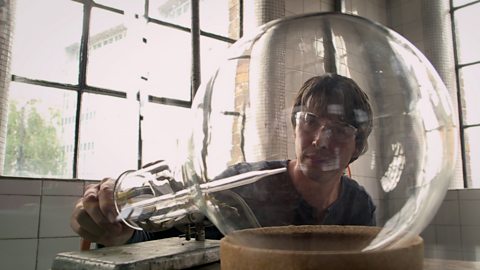
Who was Humphry Davy? video
Brian Cox follows in the footsteps of 19th Century chemist Humphry Davy, recreating one of his explosive experiments that he used to impress the crowds at the Royal Institution.
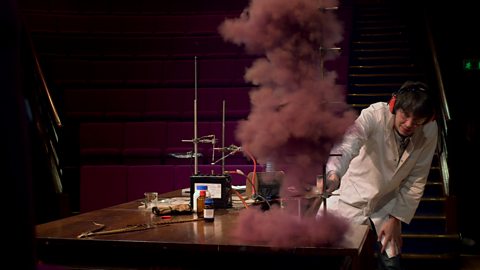
John Hunter and public engagement in science. video
Brian Cox describes how John Hunter pushed the boundaries of medicine using corpses obtained from grave-robbing and how he set up a museum to open minds about medical research.

Sir Isaac Newton and the scientific method. video
Brian Cox outlines the historical context of the era in which Newton began to be interested in the nature of the visible spectrum obtained using a prism.
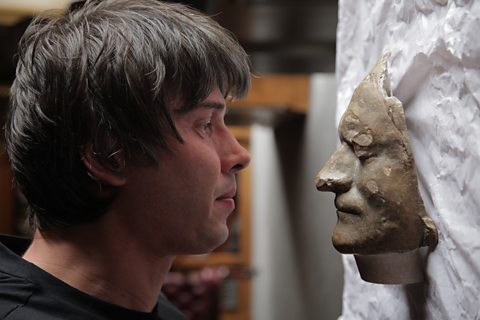
John Tyndall and blue skies research. video
Brian Cox describes the work of John Tyndall and his attempts to explain what makes the sky blue and the sunset red.

Targeted research. video
Brian Cox learns about targeted research in the modern pharmaceutical industry and how by focusing only on positive results, it fails to report negative results.
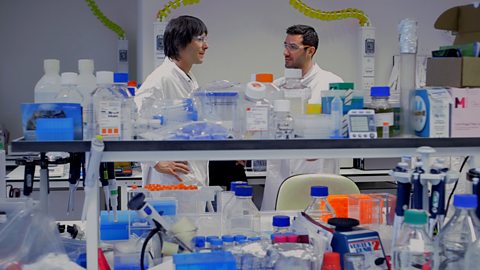
Global warming resistant GM crops. video
Brian Cox outlines the history of the discovery of DNA and how this has led to a controversy over the use of genetic modification in agriculture.
